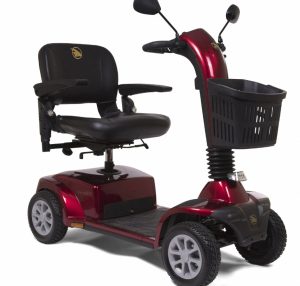Understanding the Capabilities of a 150cc Scooter
1. Engine Power:
The 150cc scooter, with its powerful engine, stands out in terms of speed among smaller engine sizes. The engine’s power output is a key factor in determining the scooter’s maximum speed, as it directly impacts how much energy is delivered to propel the scooter forward.
With a robust engine, the 150cc scooter has the capacity to generate more force, allowing it to achieve higher speeds on the road. The power output influences the scooter’s acceleration and ability to maintain a consistent pace.
It is important to note that factors such as weight, aerodynamics, and road conditions can also affect the scooter’s speed. A lighter scooter with a streamlined design will face less wind resistance, contributing to increased speed potential. Additionally, uphill terrain or unfavorable weather conditions may reduce the scooter’s overall performance and limit its top speed.
Understanding the capabilities of a 150cc scooter’s engine power can provide insights into its speed potential, helping riders make informed decisions about their riding experience.

2. Weight and Aerodynamics:
The weight of the scooter and its aerodynamic design also influence its speed. Lighter scooters with sleeker designs tend to have less wind resistance, enabling them to reach higher speeds more easily.
Factors Affecting the Top Speed of a 150cc Scooter
1. Rider Weight:
When it comes to the top speed of a scooter, the weight of the rider plays a role. A heavier rider may experience slightly lower speeds due to the increased load on the engine. The engine has to work harder to propel the scooter forward, which can affect its overall performance.
The weight of the rider affects the scooter’s acceleration and ability to reach and maintain higher speeds. It puts additional strain on the engine, requiring more power and energy to move the scooter. As a result, the scooter’s top speed may be slightly reduced compared to a lighter rider.

It’s important to note that the impact of rider weight on speed may vary depending on the scooter’s specifications and engine power. Scooters with higher engine capacities and more torque may be less affected by weight differences.
To optimize speed and performance, riders should consider their weight and choose a scooter that aligns with their needs and body type. Additionally, maintaining a healthy weight and ensuring the scooter is properly maintained can contribute to achieving the desired top speed.
2. Terrain and Conditions:
The type of terrain and road conditions can affect a scooter’s speed. Uphill gradients, rough surfaces, or adverse weather conditions can reduce the scooter’s overall performance and limit its top speed.
Average Top Speed Range of a 150cc Scooter
1. Standard Top Speed:
A 150cc scooter typically has a top speed between 55 and 65 miles per hour (88 to 105 kilometers per hour). This range provides a good indication of the scooter’s capabilities in terms of speed. However, it’s crucial to understand that the actual top speed can vary based on the specific make and model of the scooter.
Different manufacturers design their scooters with varying performance characteristics, including engine power, aerodynamics, and weight distribution. These factors can influence the scooter’s speed potential beyond the typical range.

Additionally, the condition and maintenance of the scooter can impact its top speed. A well-maintained scooter with proper tuning and regular servicing is more likely to achieve its maximum speed efficiently.
Furthermore, external factors such as rider weight, terrain, and weather conditions can affect the scooter’s performance and alter its top speed.
To determine the exact top speed of a specific 150cc scooter, it’s advisable to consult the manufacturer’s specifications or test the scooter under controlled conditions.
2. Variations in Top Speed:
Factors such as the scooter’s weight, engine efficiency, and maintenance can cause variations in the top speed even within the same engine size. Some 150cc scooters may be designed for higher speeds, while others may prioritize fuel economy and offer slightly lower top speeds.
Enhancing the Speed of a 150cc Scooter
1. Performance Modifications:
For riders seeking to enhance the speed capabilities of their 150cc scooters, modifications can be an option. Aftermarket upgrades like performance exhaust systems, carburetor tuning, or variator modifications have the potential to improve both acceleration and top speed.

Performance exhaust systems, designed specifically for the scooter model, can optimize the flow of exhaust gases, increasing engine efficiency and potentially boosting speed. Carburetor tuning involves adjusting the fuel-to-air ratio for better combustion, which can result in improved performance and higher speeds.
Modifying the variator, a key component in the scooter’s drive system, enables better transmission of power to the wheels. Upgrading to a high-performance variator or installing different roller weights can enhance acceleration and top speed.
It’s important to note that modifying a scooter’s performance should be done with caution and by knowledgeable individuals. Consult with professionals or experienced mechanics to ensure that modifications are done correctly and safely, considering factors such as engine compatibility and legal restrictions.
Prioritizing safety and adhering to local regulations, riders can explore modification options to unlock the full speed potential of their 150cc scooters.
2. Safety Considerations:
It’s important to exercise caution when modifying a scooter’s performance. Always consult with professionals or experienced mechanics to ensure the modifications are done correctly and safely. Additionally, be aware of any legal restrictions or regulations regarding modifications in your area.
Safe Riding Practices and Legal Considerations
1. Adhering to Speed Limits:
Safety should always be a top priority when riding a scooter, regardless of its top speed. It is crucial to adhere to speed limits imposed by local authorities and ride responsibly. Following traffic laws, including speed regulations, is essential to maintain safety on the road.

It is necessary to adjust your speed according to the road conditions, such as traffic density, weather, and visibility. Slow down in areas with heavy traffic, pedestrian crossings, or school zones to ensure the safety of everyone sharing the road.
Maintaining a safe speed allows you to have better control over your scooter, react promptly to unexpected situations, and avoid accidents. It also demonstrates respect for other road users and contributes to a harmonious and secure traffic environment.
Remember, speed limits are in place for a reason – to protect you, other road users, and pedestrians. By obeying these limits and riding responsibly, you play an active role in preventing accidents and promoting a safer riding experience for everyone.
2. Checking Local Regulations:
Different regions and countries may have specific speed restrictions for scooters. It’s crucial to familiarize yourself with the local laws and regulations regarding scooter speeds to avoid any legal complications.
In conclusion, a 150cc scooter can reach a top speed range of 55 to 65 miles per hour, depending on various factors such as engine power, weight, and aerodynamics. While modifications can potentially enhance a scooter’s speed, it’s important to prioritize safety and consult professionals to ensure proper modifications. Riding responsibly and adhering to speed limits is crucial, and understanding local regulations regarding scooter speeds is necessary to avoid legal issues. So, whether you’re looking to unleash the speed of your 150cc scooter or simply enjoy a comfortable cruising speed, always prioritize safety and respect the rules of the road.

